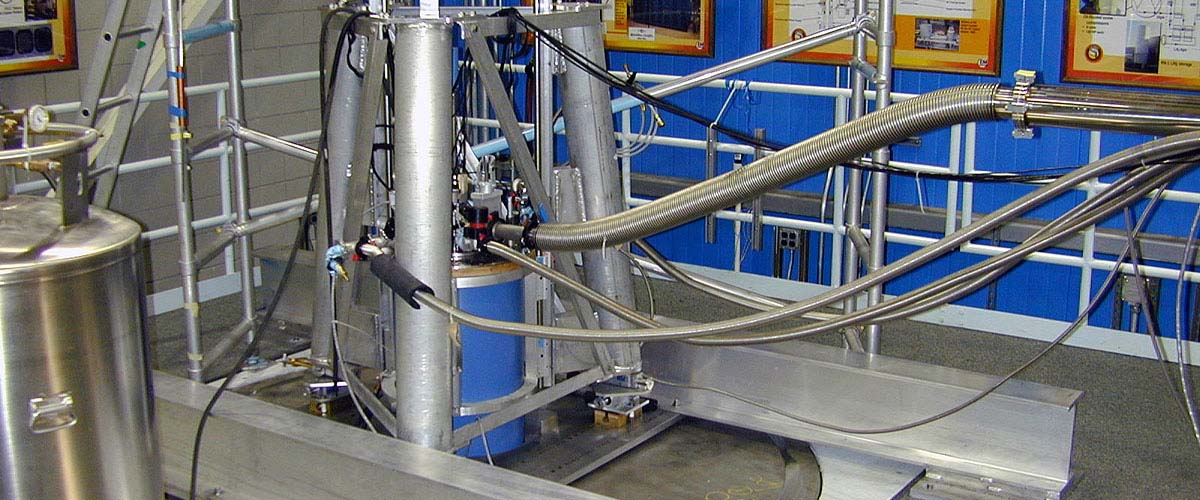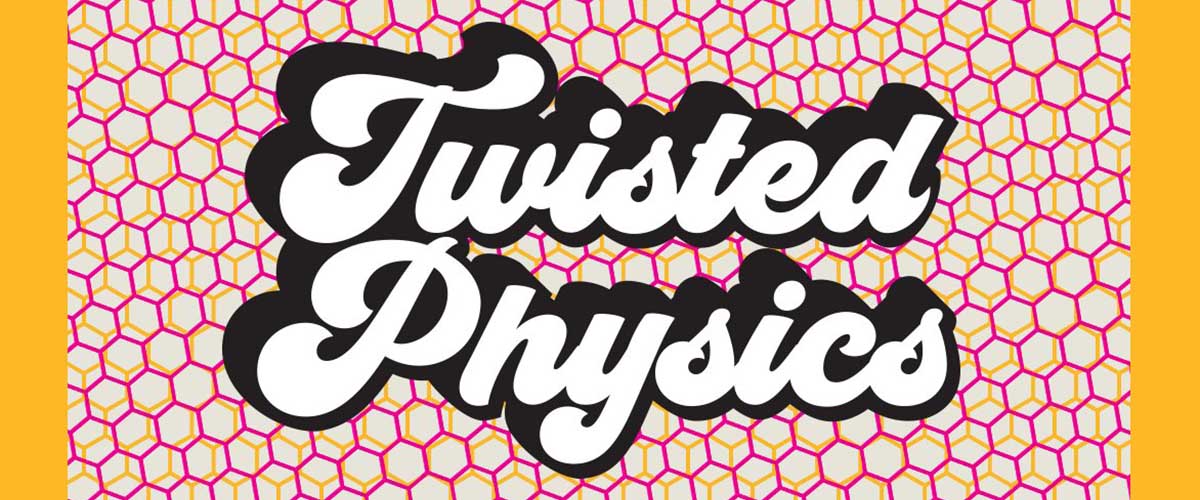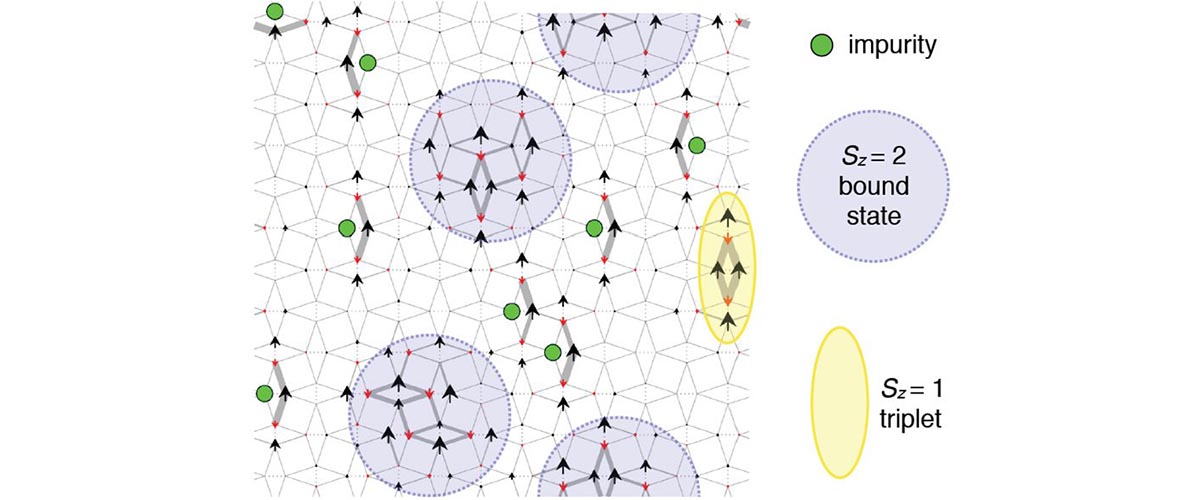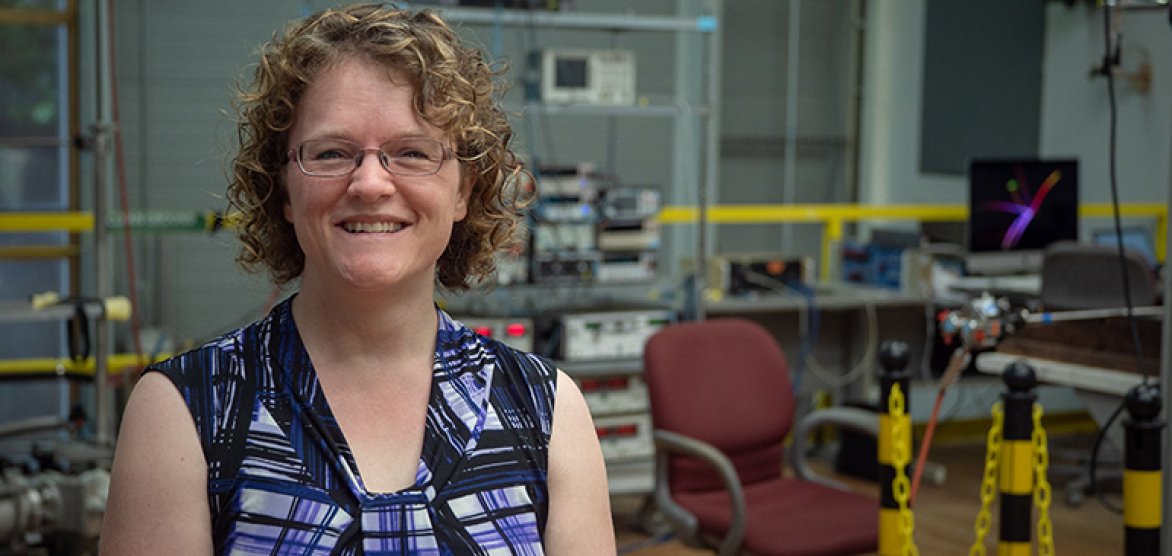It was 1997, and an ambitious, expensive and incredibly complex project — the design and construction of the National High Magnetic Field Lab’s new 45-tesla hybrid magnet — was just months from its scheduled debut. Part resistive magnet, part superconducting magnet, this new tool would be leaps and bounds stronger than any other magnet on the planet.
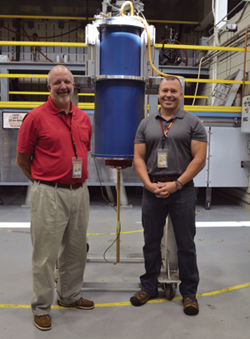
Scientists Eric Palm (left) and Tim Murphy in front of the dilution fridge, part of the 45 tesla magnet.
Scientists across the world were eager to put a wide range of materials into the instrument to see what would happen to them at such high fields. Low-temperature physicists were particularly keen to combine those high magnetic fields with super cold temperatures. Such a unique experimental environment could help them learn more about the fractional quantum Hall effect, an exciting discovery that earned the 1998 Nobel Prize in physics.
There was, however, a problem. A trio of scientists and engineers at the MagLab was wrestling with an ornery piece of equipment — the very tool those physicists needed to make their experiments cold.
For more than a year, Eric Palm, Tim Murphy and Mark Jackson had tackled every puzzle the Portable Dilution Refrigerator (dubbed the “PDF” or dil fridge for short) had thrown at them. But each solution was followed by yet another problem.
The men were under immense pressure: If they couldn’t make the new $250,000 contraption work, some of the cutting-edge science the hybrid magnet was designed to enable just wouldn’t happen.
It was man against machine. And the machine was winning.
Helium is tricky
Dil fridges have been used with magnets for decades. They are special vessels of frigid liquid helium, with a section designed to fit inside a magnet and create an environment much colder than temperatures found in deep space.
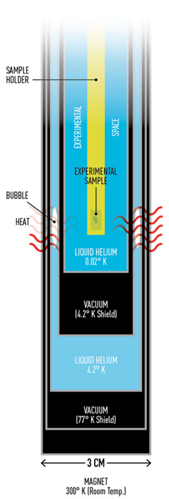
An air bubble trapped in the dil fridge let heat reach the experiment. Scientists solved this by inserting a sheet of copper.
Part of the dil fridge sits atop the magnet, while a long, cylindrical “tail” extends down into the bore, or center, of the magnet. A series of vacuum-insulated layers around the dil fridge, separated by stainless steel walls, keeps the temperature in the central “mixing chamber” of the dil fridge at just a fraction of a degree above absolute zero. (See illustration.)
Helium, that lighter-than-air gas that fills our party balloons, is even more useful as a liquid — at least to scientists. When it liquefies, helium dips to negative 269 degrees Celsius (negative 452 degrees Fahrenheit) — colder than the far reaches of our solar system. Because some materials behave in interesting ways when they are that cold, scientists love liquid helium.
Thing is, it’s tricky to turn helium into a liquid, and tricky to keep it from reverting to a gas. Particularly if it’s in the center of a magnet.
Years ago, when resistive magnets first started reaching fields higher than 18 tesla, scientists using liquid helium noticed that something kept heating up their low-temperature experiments. They finally figured out that bubbles of helium gas were forming around those experiments, which were submerged in liquid helium. Rather than rising to the surface, the bubbles were being trapped at the center of the magnetic field, which was unfortunate because that is exactly where the experiment is located.
Helium is diamagnetic — repelled by magnetic fields. And liquid helium is repelled more than helium gas because it’s more dense. So when an experiment is placed in liquid helium, in a very strong magnet, the liquid helium is repelled from the center of the magnetic field with more force than the helium gas is, leading to the creation of an unwelcome, warm helium gas bubble near the experiment.
Luckily, scientists found a way around this problem by reducing the pressure above the liquid helium so it could get even colder. This produces a “superfluid,” an exotic liquid that has no resistance to flow and creates no gas bubbles.
Try, try again … and again … and again
However, the dil fridge built by Oxford Instruments for the MagLab’s new hybrid magnet was a unique design. It required a custom solution.
The helium bubble was the last in a yearlong series of dil fridge problems that the team of Murphy, Palm and Jackson tackled. By the time they approached this final hurdle, the “D” in PDF had come to stand not for dilution, but for a four-letter word that more firmly expressed the team’s frustration.
“The amazing thing was how many times we took that thing apart and put it back together,” said Palm, who then headed the lab’s Millikelvin Facility and is now deputy director of the MagLab. “It makes me ill just to think about it … we started hating that thing. At one point we seriously thought it was haunted.”
The helium bubble stumping the team was forming in one of the insulating layers surrounding the dil fridge, transferring enough heat toward the central chamber to cause problems.
Week after week, the trio brainstormed about the bubble. They considered sucking it out with a kind of straw. They considered adding a special refrigerator to the helium bath that would cool only the lower part to superfluid temperatures. They threw idea after idea at the cold, pitiless, stainless steel canister, only to have each one strike it with a dull thud and fall dead to the floor.
“We were pretty worn out from problem solving,” recalled Murphy, who then worked in the Millikelvin Facility. Murphy now directs that facility and serves as interim director of the MagLab’s DC Field Facility, which houses the hybrid. “It becomes your nemesis. You solve one problem, you move forward a little, but you encounter another problem. … You just have to keep at it.”
Keep at it they did. If at first you don’t succeed, and all that. Problem was, they were a bit too tenacious: They were persistently, valiantly, tirelessly trying to solve the wrong problem.
Finding the right problem
Mercifully, the day came when Palm, Murphy and Jackson, an Oxford Instruments engineer assigned to debug the dil fridge, stopped thinking about the helium bubble. It was as if a camera zoomed out from the closeup they had long fixated on, revealing a wider, more telling view of the problem.
Murphy recalled the magical moment.
“One of us suggested, ‘Well, why couldn’t we just short it out with copper?’ And all of us just looked at each other and said, ‘Yeah, why couldn’t we?’”



